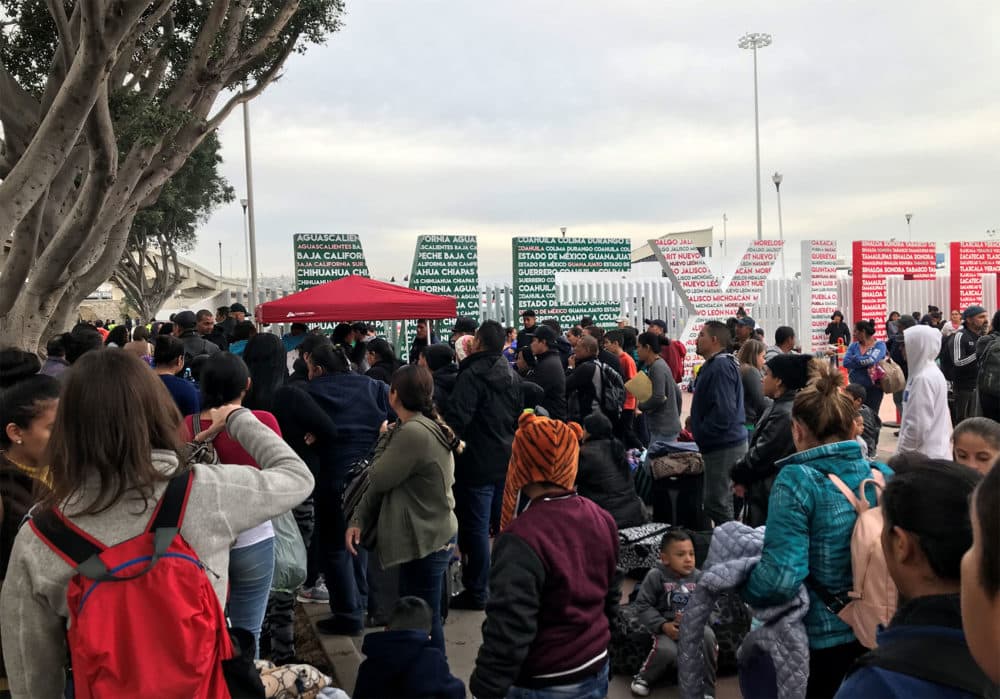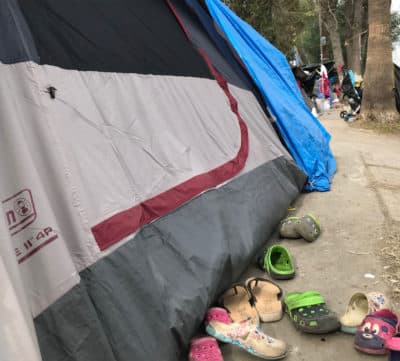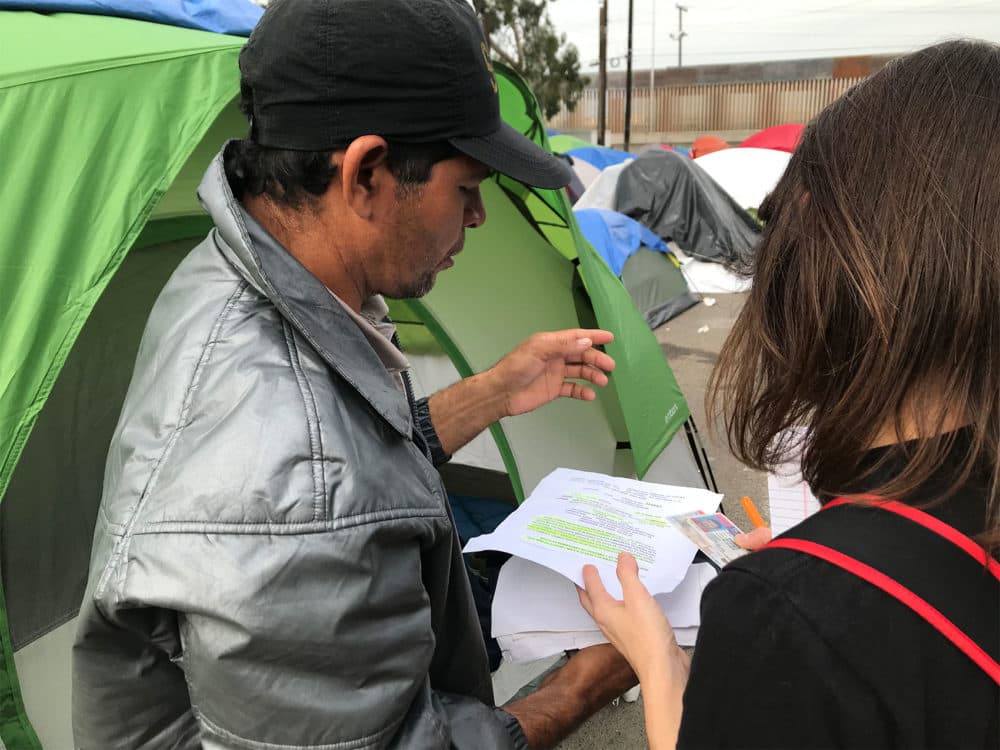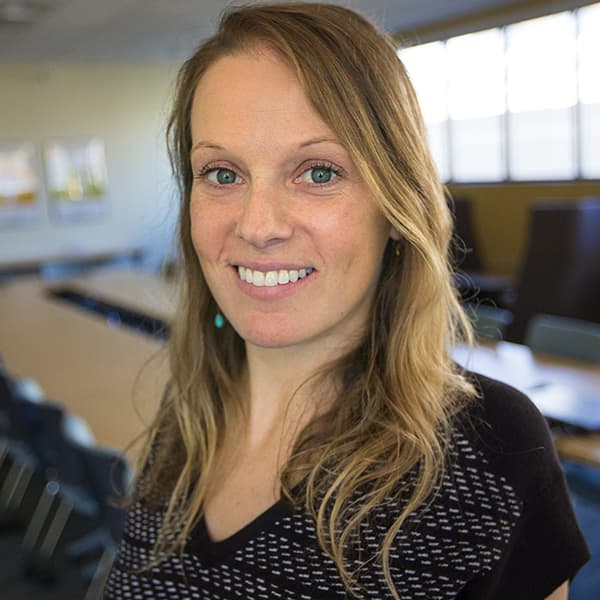Advertisement
Boston-Area Volunteers Offer Legal Advice To Migrants In Tijuana

Thousands of migrants, many of them from Central America, are waiting in Tijuana, Mexico, for a chance to apply for asylum in the United States.
It’s a fluid situation on the ground. Many of the migrants shuffle between tents and shelters as volunteers pass out meals and warm clothing.
A group of Boston University law instructors and students was in Tijuana over the weekend offering legal advice. The group began their work each morning around 7:30 as large crowds of people gathered at the plaza in front of "El Chaparral," a border crossing near San Ysidro, California.
Families huddled together around their belongings, with young children wearing pajamas and carrying backpacks. Some of them entertained themselves playing a pickup soccer game, kicking around an empty plastic bottle of Sprite. They were all there hoping it would be the day their numbers are called from the asylum waitlist.
A man began calling out numbers, reading from a notebook. The crowd gathered around him.

There are an estimated 5,000 people on the list, waiting for their turn to enter the U.S. and apply for asylum, a humanitarian immigration status. Many of those on the list have been in Tijuana for months, coming from other cities in Mexico and places as far away as Sierra Leone and Haiti.
The BU law instructors and students circulated throughout the crowd, asking people if they have questions about how to seek asylum.
One of the BU students, Jesus Zelaya, is of Honduran and Salvadoran descent. He says that’s a big motivator for him being down there.
"Coming from an immigrant background, I understand the challenges and struggles of being an immigrant, and this allows me essentially to reflect on what my life would be like if I was still in El Savador," he said. "I wouldn't be in law school."
Zelaya handed out pamphlets about migrant rights and explained the asylum process to many of the people waiting in the plaza.
Advertisement
Julie Dahlstrom, a clinical associate professor who heads up the immigrants’ rights clinic at BU School of Law, spoke with a woman who says she fled cartel violence in Michoácan, Mexico. Dahlstrom says most of the migrants she spoke with had little knowledge of their rights or the risks associated with applying for asylum.
"They have walked, they have come such a tremendous way, but don’t really have a sense of the process," she said. "So for most of the people we interviewed they have tremendous fears of some sort of persecution in their country but now it’s increasingly hard to qualify. So, they didn’t quite understand that and it became hard for them to understand, 'If I was denied, what would I do next with my life?' "
It’s about a 15-minute walk from "El Chaparral" to a tent city that’s popped up outside of Benito Juárez soccer stadium. A few weeks ago an estimated 6,000 migrants were living there. That number has dropped to about 500 since the Mexican government opened a large shelter outside of Tijuana.

Forty-five-year-old Edgar Vanegas stepped out of a green camping tent in which he and his nephew have been living for more than a month. Vanegas is from El Salvador but says he lived in Danbury, Connecticut, for a few years with Temporary Protected Status; he showed off his Connecticut driver's license.
Vanegas said he walked north for more than two months with the migrant caravan because he wants to be with his children, who are both U.S. citizens.
Speaking in Spanish, he said he worked in construction and as a painter when he lived in Connecticut. He says when he went home to El Salvador to visit in 2016 and then tried to return to the U.S., he was stopped at the San Salvador airport because of what he calls a clerical error on his paperwork.
His hope now is to apply for asylum, along with many of the others who traveled north. He says his name is on the waitlist and he expects his number will be called in a month or so.
Back at “El Chaparral” the crowds continued to gather. One woman’s number is called and she hugged family members standing next to her. They have a different number. They all cried a little together, smiling. She’d been waiting for a month and a half for her chance to apply for asylum. She gathered her children and a few bags of belongings and they rushed around the corner, setting off on the next stage of their journey.
This segment aired on December 17, 2018.
